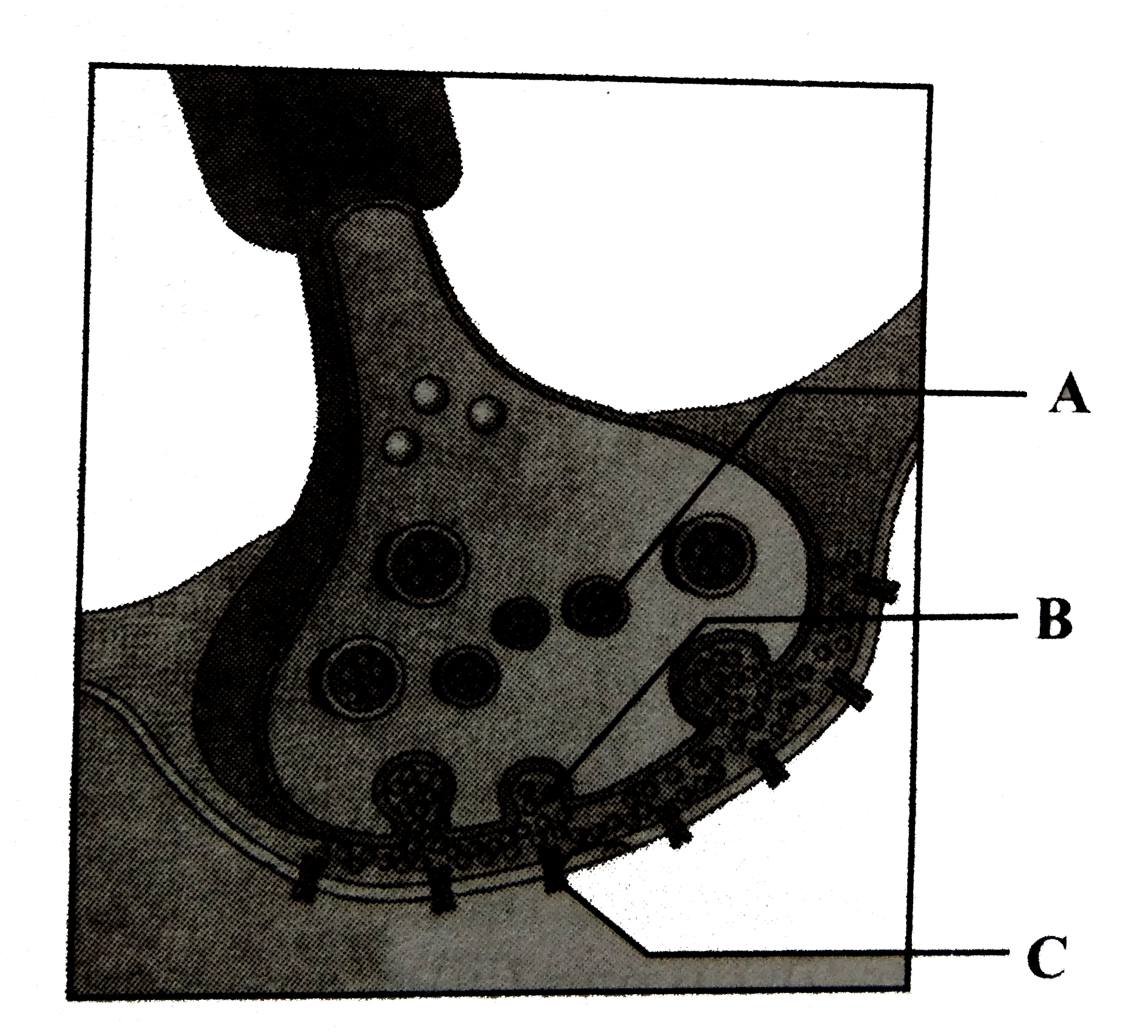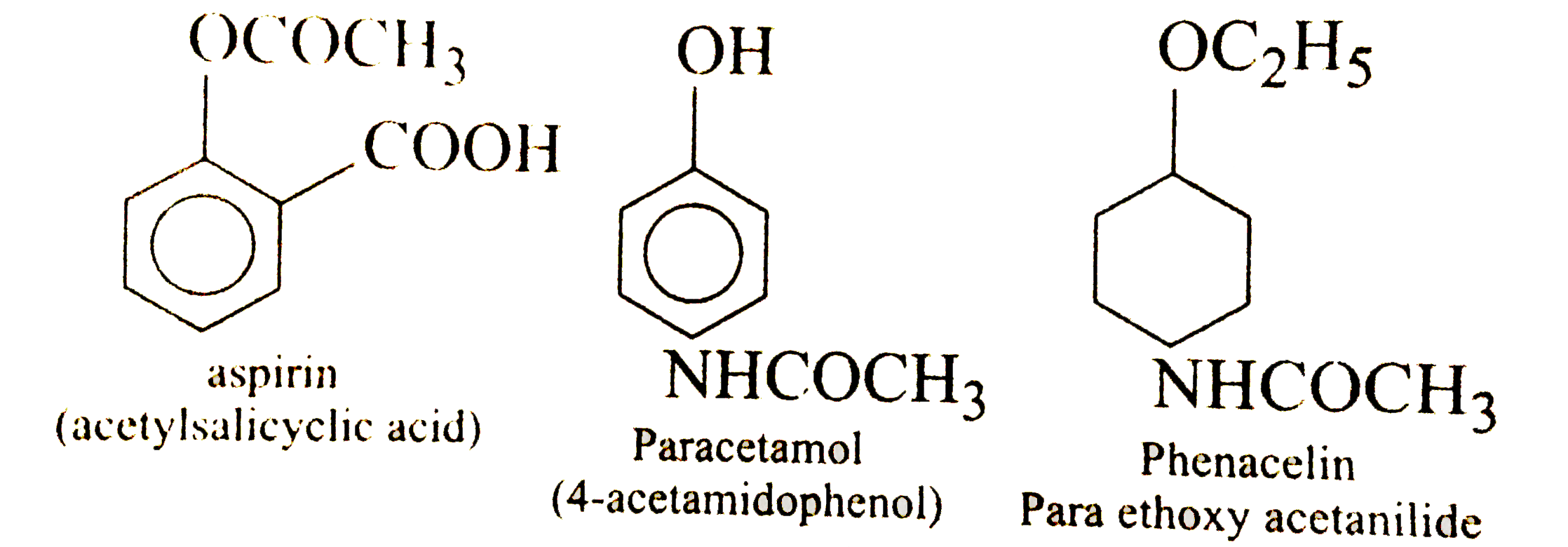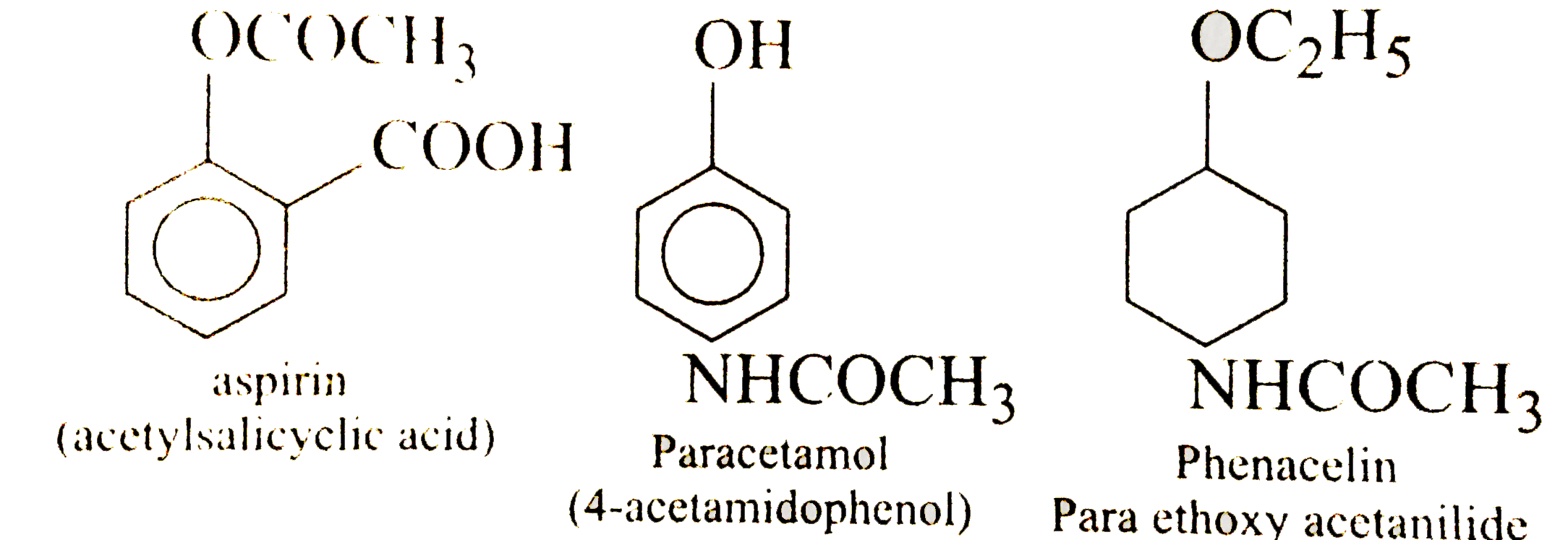A particular disease of the nervous system specifically involves the Ca2+ ion channels at the chemical synapses of motor neurons where neurotransmitter is stored and released.In other words, this disease affects the
axon terminals of the presynaptic cell and the release of acetylcholine
axon terminals of the postsynaptic cell and the release of K+ ions.
electrical synapses.
axon terminals of the presynaptic cell and the release of K+ ions.
Step by step video & image solution for A particular disease of the nervous system specifically involves the Ca^(2+) ion channels at the chemical synapses of motor neurons where neurotransmitter is stored and released.In other words, this disease affects the by Biology experts to help you in doubts & scoring excellent marks in Class 12 exams.
Topper's Solved these Questions
Similar Questions
Read the given passage and answer questions follow :
Tetrachloromethane is produced in large quantities for use in the manufacture of refrigerants and propellants for aerosol cans. It is also used as feedstock in the synthesis of chlorofluorocarbons and other chemicals, pharmaceutical manufacturing, and general solvent use. Until the mid 1960s, it was also widely used as a cleaning fluid, both in industry, as a degreasing agent, and in the home, as a spot remover and as fire extinguisher. There is some evidence that exposure to carbon tetrachloride causes liver cancer in humans. The most common effects are dizziness, light headedness, nausea and vomiting, which can cause permanent damage to nerve cells. In severe cases, these effects can lead rapidly to stupor, coma, unconsciousness or death. Exposure to CCl4 can make the heart beat irregularly or stop. The chemical may irritate the eyes on contact. When carbon tetrachloride is released into the air, it rises to the atmosphere and depletes the ozone layer. Depletion of the ozone layer is believed to increase human exposure to ultraviolet rays, leading to increased skin cancer, eye diseases and disorders, and possible disruption of the immune system.
How does carbon tetrachloride affect the heart?View SolutionWhich statements are incorrect for mechanism of nerve impulse conduction along electrical junctions of nerous or electrical synapse?
i Nerve impulse flow directly from one neuron to other across the synapses in electrical synapses
ii. Transmission of an impulse across electrical synapses is very similar to impulse conduction along a single axon
iii. Impulse transmission across an elecetrical synapse is always faster than that across a chemical synapse.
iv. Electrical synapses are rare in our system
v. At an electrical synapse, the membranes of the pre and post-synaptic neurous are separated by a fluid-filled space called synaptic cleft is thick.
vi. Chemicals called neurotransmitters are involved in the transmission of impulses at this synapseView Solution
Knowledge Check
- Question 1 - Select One
Which option is correct for conduction of nerve impulse along chemical synapse?
i. At synapse, the membranes of the pre and postsynaptic neurons are separated by a fluid-filled space called synaptic cleft
ii. Chemicals called neurotransmitters are involved in the transmission of impulses at these synapses
iii. The axon terminals contain vesicles filled with these neurotransmitters
iv. When an impulse arrives at the axon terminal, synaptic vesicles release their neurotransmitters in the synaptic cleft.
v. The released neurotransmitters bind to their specific receptors, present on the pre-synaptic membrane.
vi. Opens ion channels allowing the entry of ions which can generate a new potential in the postsynaptic neuron
vii. The new potential developed is only excitatoryAi, ii, iii, iv, v and viiiBi, ii, iii, iv and viCi, iv, v, vi and viiDi, ii, iii, iv, v, vi and viii - Question 2 - Select One
The given diagram shows axon terminal.Select the option that correctly matches the steps in transmission of impulses (list i-vii) with the labellings (A-C) in diagram.

(i)Chemicals called neurotransmitters are released in the synaptic cleft through ion channels.
(ii)When an impulse arrives at the axon terminal, it stimulates the movement of synaptic vesicles.
(iii)Neurotransmitters are endocytosed into the neurons.
(iv)The ions channels close with the binding of neurotransmitters to their specific receptors vesicles.
(v)Synaptic vesicles move towards the membrane where they fuse with the plasma membrane.
(vi)Neurotransmitters are released in the synaptic cleft.
(vii)The released transmitters bind to their specific receptors on post-synaptic membraneAA B C(ii) (iii) (i)BA B C(v) (vi) (iv)CA B C(ii) (vi) (vii)DA B C(v) (iii) (iv) - Question 3 - Select One
The steps involved in the mechanism of muscle contraction are given below.
Arrange the steps in proper sequential order and select the correct option.
I. Release of calcium ions in the sarcoplasm.
II. Signal sent by the CNS via a motor neuron.
III. Binding of calcium with a subunit of troponin on actin filaments.
IV. Generation of the action potential in the sarcolemma.
V. Binding of myosin head to the exposed active sites on actin to form a cross-bridge.
VI. Inward pulling of ‘Z’ line attached to actin causing shortening of the sarcomere.
VII. Pulling of the attached actin filaments towards the centre of 'A' band.
VIII. Release of neurotransmitter acetylcholine and generation of the action potential in the sarcolemma.AIII, II, V, I, IV, VI, VII, VIIIBII, VIII, IV, I, III, V, VII, VICI, VIII, VI, II, V, IV, III, VIIDII, IV, V, I, III, VII, VIII, VI
A list of events occurring in the transmission of nerve impulse across the synapse is given below in a random order
(i)Opening of specific ion channels allows the entry of ions, a new action potential is generated in the post-synaptic neuron.
(ii)Neurotransmitter binds to the receptor on post synaptic membrane.
(iii)Synaptic vesicle fuses with pre-synaptic membrane, neurotransmitter release into synaptic cleft.
(iv)Depolarisation of pre-synaptic membrane.
(v)Arrival of action potential at axon terminal.
Which of the following options represents these events in a correct order ?View SolutionWhich of the following statements regarding impulse transmission is incorrect ?
I . Chemicals called neurotransmitters are involved in impulse transmission across the synapses.
II. The membranes of the pre - synaptic and post - synaptic neuron are separated by an empty space called the synaptic cleft.
III. The released neurotransmitters bind to the specific receptors present on the pre - synaptic membrane.
IV. The new potential which develops is always excitatory.View SolutionIn these questions, the 1st and The last sentence of the passage are numbered 1 and 6. The rest of the passage is split into four parts and named P, Q, R and S. These four parts are not given in their proper order. Read the sentences and find out which of the four combinations is correct.
1. 'Acu' means needles in Latin.
P. The needles stimulates specific nerves that transmit electrical impulses via the spinal cord and brain to the affected area.
Q. Quite appropriately, then, acu-puncture consists of inserting very fine needles at specific points on the skin located near nerve endings.
R. Acupuncture also stimulates the release of chemical substances from the brain centres and pitulary glands.
S. These are connected to one an other by lines called channels or meridians.
6. Known as endorphins and encephalins, which are released and carried across the blood stream, these chemicals are the body's own pain-relief mechanism.View SolutionThe chemicals used to treat diseases and to reduce the suffering from pain are known as drugs or medicines. The chemicals used in chemotherapy are classified according to their action.
For example antipyretics are medicines used to lower the body temperature in high fever. The examples of antipyretics are para ethoxy acetamide and analgin.

Analgesics are medicines which relieve pain. They are of two types. (i) Narcotics are medicines which relieve pain by producing sleep and unconsciousness. They are morphine, morphine diacetate (heroin) and codeine. They are habit forming (ii) None narcotic analgesics are not habit forming and do not usually induce sleep. They are aspirin, brufen and butazolidine.
Antiseptics are medicines which kill or prevent the growth of micro-organisms. Antiseptics are also used to reduce odours arising out of bacterial decomposition on the surface of the body. They are 2% solution of phenol, dettol (a solution of terpineol and chloro-xylenol) savlon, bithional etc.
Tranquillizers are medicine used to relieve mental tension and an anxiety. They act on the nervous system and induce sleep. They may antidepressants (to elevate mood) such as methedrine and vitalin, sedatives (relieve mental agitation and violence) such as diazopam, seconal, luminal and equanil.
Antibiotics are medicines produced by micro-organisms such as fungi, bacteria and moulds and are used to kill other microorganisms. They are penicillin (Treat sore throat, bronchitis, pneumonia), streptomycin (active aginst tuberclosis, chloramphenicol treat typhoid, acute fever, urinary infection.
Which of the following statements is false ?View SolutionThe chemicals used to treat diseases and to reduce the suffering from pain are known as drugs or medicines. The chemicals used in chemotherapy are classified according to their action.
For example antipyretics are medicines used to lower the body temperature in high fever. The examples of antipyretics are para ethoxy acetamide and analgin.

Analgesics are medicines which relieve pain. They are of two types. (i) Narcotics are medicines which relieve pain by producing sleep and unconsciousness. They are morphine, morphine diacetate (heroin) and codeine. They are habit forming (ii) None narcotic analgesics are not habit forming and do not usually induce sleep. They are aspirin, brufen and butazolidine.
Antiseptics are medicines which kill or prevent the growth of micro-organisms. Antiseptics are also used to reduce odours arising out of bacterial decomposition on the surface of the body. They are 2% solution of phenol, dettol (a solution of terpineol and chloro-xylenol) savlon, bithional etc.
Tranquillizers are medicine used to relieve mental tension and an anxiety. They act on the nervous system and induce sleep. They may antidepressants (to elevate mood) such as methedrine and vitalin, sedatives (relieve mental agitation and violence) such as diazopam, seconal, luminal and equanil.
Antibiotics are medicines produced by micro-organisms such as fungi, bacteria and moulds and are used to kill other microorganisms. They are penicillin (Treat sore throat, bronchitis, pneumonia), streptomycin (active aginst tuberclosis, chloramphenicol treat typhoid, acute fever, urinary infection.
The drug mathedrine belongs to the class of :View Solution
